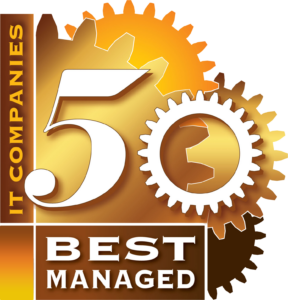
How Should Companies Secure Their I.T. Infrastructure?
How Should Companies Secure Their I.T. Infrastructure?

In an increasingly digitized world, companies are continually exploring new ways to secure their IT infrastructure. As the need for information security grows in our ever-evolving digital age, it is essential that organizations stay one step ahead of malicious actors and cyber criminals. This article will explore the best practices for implementing a comprehensive defense against potential intrusions into corporate networks, data centers, and other sensitive resources.
The stakes are high when it comes to defending against unauthorized access or attempts at manipulation of corporate assets. Companies must remain vigilant if they wish to identify vulnerabilities before attackers can exploit them and compromise the business’s integrity. By combining preventive measures with proactive oversight, organizations can ensure that their systems remain protected from external threats.
From using firewalls to deploying multi-factor authentication protocols, there are many strategies available for securing an organization’s IT infrastructure. In this article we’ll discuss how businesses should effectively use these techniques to protect themselves from potential harm while maintaining compliance with industry regulations. With proper implementation of updated technologies and processes, companies have the opportunity to create a safe digital environment for employees and customers alike.
What Are The Security Risks To IT Infrastructure
Medium sized companies are increasingly dependent on IT infrastructure to drive their business operations, making security an important component. The risks associated with this technology can be complex and multifaceted, ranging from malicious attacks by individuals or groups to natural disasters that cause power outages. Cyber criminals often use viruses and malware in order to steal information or disrupt systems, while ransomware is another form of attack which locks the victim’s data until a ransom payment is made. Additionally, physical threats such as theft of equipment may also pose serious security risks. Furthermore, human error can lead to unauthorized access or incorrect configuration that compromises the integrity of the system. To further complicate matters, there may also be regulatory compliance requirements that must be met in order for businesses to operate legally. It is clear then, that understanding these various types of risk is essential if medium-sized companies wish to secure their IT infrastructure effectively.
Best Practices For Secure IT Infrastructure
A wise man once said “the only way to secure your IT infrastructure is by prevention” and it couldn’t be truer. The best practices for securing the IT Infrastructure of small to medium sized companies include a variety of strategies such as implementing preventive measures, employing security tools, monitoring systems continuously and having a plan in place for when an incident does occur.
The first step is to implement preventive measures that make sure no malicious activity can take place before it even begins. This includes things like robust password policies, two-factor authentication, disabling unused services, keeping software patched and up-to-date, encrypting data both at rest and in transit, maintaining proper access control lists (ACLs), performing regular system scans with network vulnerability scanners and ensuring physical security of devices. Proper segregation of networks into multiple subnets can also help protect the company’s resources from external threats while reducing their attack surface area significantly.
Another important practice is to employ various security tools that can detect suspicious activities on the network. Firewalls are essential for preventing unauthorized traffic from entering the network while Intrusion Detection Systems (IDS) alert administrators whenever an intruder attempts to gain access or launch malicious attacks against their systems. Additionally, antivirus solutions should be deployed across all endpoints along with other endpoint protection technologies like application whitelisting which only allows specific applications known to be safe to run on users’ computers. These tools greatly reduce the chances of any malicious code making its way onto corporate machines or servers.
Continuous monitoring of systems is necessary in order to identify potential weaknesses in the IT infrastructure and address them immediately upon detection. Companies should regularly review logs generated by firewall rules, intrusion detection systems as well as web proxies for any anomalies that could indicate a breach has occurred or someone has attempted one unsuccessfully. Having comprehensive logging policies in place will enable organizations to quickly investigate incidents if they do happen so that appropriate steps can be taken right away to mitigate the damage done and ensure these issues don’t arise again in future.
Finally, developing an incident response plan ahead of time helps prepare companies for any eventuality where they might have been breached thus allowing them to respond effectively without wasting valuable time trying to figure out what needs to be done next during a crisis situation. It should include details such as who should be notified about the incident, how backups will be restored, steps required for forensic analysis etc., so that everyone involved knows exactly what actions need taking following an attack on their IT infrastructure.
Having laid down some general best practices for protecting IT infrastructures of small to medium businesses let us now look at how we can monitor and maintain security over time…
How To Monitor And Maintain IT Security
Ensuring the security of a company’s IT infrastructure is paramount for any business that relies on digital technology. For this purpose, monitoring and maintaining IT security protocols must be considered as an ongoing process rather than a one-time task. Like a well-oiled machine, each component within the system needs to be regularly inspected in order to ensure it remains operational. To illustrate, imagine a castle wall with its many guards keeping watch at all times – this is what effective IT security should look like: vigilant and ever alert.
Monitoring can be done through regular assessments of hardware, software and network configurations to identify potential weaknesses which may put data at risk. Additionally, access control systems should be implemented in order to minimize unauthorized access to critical information while encrypting sensitive data whenever possible. Furthermore, employee training on secure computing practices is essential so they are aware of their responsibilities when handling confidential materials or using corporate devices. When properly managed, these measures can help mitigate threats from malicious actors and protect against accidental damage or loss of important assets.
The maintenance aspect requires organizations to stay up-to-date with the latest security patches and anti-malware tools in order combat new types of cyberattacks such as ransomware. Moreover, having appropriate backup plans ready in case of emergency will provide businesses with peace of mind knowing that their valuable data can still be recovered even if disaster strikes unexpectedly. In short, companies need to think proactively by staying ahead of current trends instead of simply reacting after something has already gone wrong.
All things considered, creating an environment where IT security is given priority requires dedication and diligence from everyone involved; however the potential rewards far outweigh the effort invested since businesses can avoid costly incidents associated with data insecurity or breaches in confidentiality. As such, taking the necessary steps towards developing reliable safety mechanisms for digital assets ought to remain top priority for any forward thinking organization aiming for long term success.
Conclusion
Organizations must take steps to secure their IT infrastructure if they are to protect against cyber-attacks, data breaches, and other malicious activity. In the digital age, protecting company assets is a critical part of any successful business strategy. To ensure that security measures remain effective, organizations should apply best practices for securing IT infrastructure and continuously monitor and maintain them.
Securing your IT infrastructure should be a top priority for any company. With the increase in cyber threats, it’s no longer a question of if your business will be attacked, but when. By implementing a multi-layered security approach, including employee education, software updates, and regular backups, you can protect your business and avoid the costly consequences of a breach.
If you need help securing your IT infrastructure or have any questions, don’t hesitate to reach out to the experts at CopperTree Solutions. We offer a range of IT solutions and services to keep your business safe and secure, and we’d be happy to help you find the right solution for your needs.
Book a call with us today to learn more about how we can help you protect your business and ensure the safety of your data. With CopperTree Solutions on your side, you can rest easy knowing that your IT infrastructure is in good hands.




